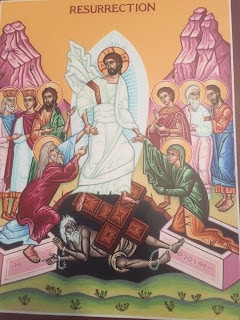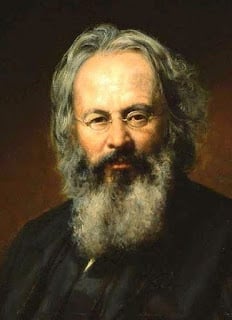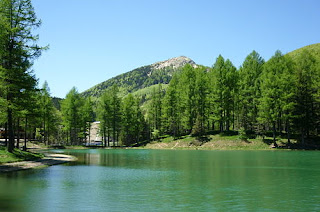Back in the 1990s, when I was serving as a deacon in New York, a colleague, who has since passed on to his eternal reward, drew upon the then common technology of the videocassette recorder to refer to Jesus’ resurrection as a fast forward. That complemented another then popular image of the resurrection as the effect of the future upon the present. All such analogies are attempts to use ordinary language to describe the totally out of the ordinary happening we call Christ’s resurrection, the unique and definitive experience which enables us to say that Jesus is, instead of Jesus was.
To appreciate the uniqueness of Christ’s resurrection one need only compare the gospel accounts of the events surrounding the resurrection with the same gospels’ accounts of the raising of Jairus’ daughter (Mark 5:22-43), the widow’s son (Luke 7:11-17), and Lazarus (John 11:1-44). Those were amazing occurrences, to be sure, which overjoyed and inspired those who witnessed them. They were well beyond normal expectations, given the medical technology available at the time. But they could be recounted clearly and comprehensively. As miraculous happenings or « signs, » they filled those present with hope that God was making his presence manifest among his people in an extraordinary way, which would somehow be of even wider benefit beyond the temporary extension of ordinary human life for one particular 12-year old girl, one particular young man, and one particular family friend of Jesus. That’s saying a lot, of course. But those events were not saying fast forward. They were a wonderful prolongation of the present, but they hardly represented the effect of the future upon the present.
In contrast, the gospels accounts of Jesus’s resurrection – or rather of the experiences of these who were made aware of it – reflect the disciples’ confusion and anxiety about something both unexpected and apparently unintelligible to them at first. Besides reflecting the really unique and mysterious character of the event, these reactions do us the favor of allowing us to share in the disciples’ experience from our own as yet seemingly un-futured present.
It is one thing to recognize as an abstract intellectual proposition that, of course, God – if God really exists as the Creator – can re-create something new, something unimaginably new and hence completely unexpected. It is something else, however, to experience that directly or be confronted by that personally, and try to comprehend its significance. That was the challenge which faced the disciples, who not only had to discover finally what Jesus’ resurrection from the dead meant for him but what it meant for them and what it means for us – and then spread the good news to all the world.
Tomorrow, the Church will triumphantly proclaim how Peter and the Beloved Disciple ran to the tomb out of curiosity on the basis of Mary Magdalene’s confusingly incomplete report. That familiar Gospel reading [John 20:1-9] assures us both that the Beloved Disciple saw and believed, and that they did not yet understand the scripture that he had to rise from the dead.
Whatever its present effects, the future remains the future and so cannot yet be completely understood. But we are able to see its effect and so come to belief. Easter invites us to put ourselves in the position of those disciples – unexpectedly (and excitedly) experiencing something surprisingly new in a world where everything else seems so ordinary and old.
Like those original disciples, we are not all the same. Some like Mary Magdalene and the other women may come to the empty tomb in a spirit of devotion and a desire to be of service. Some like Peter and the Beloved Disciple may come out of curiosity and wonder. Some of us run fast, like the disciple whom Jesus loved. Others, beset by doubts or daily difficulties, run much more slowly, like Peter. But what matters most, the Gospel story seems to suggest, is that we get there – that we have come like those first disciples to that tomb that was supposed to stay forever closed and dark, but from which the stone has been removed, in order that we – and the world – may believe.





